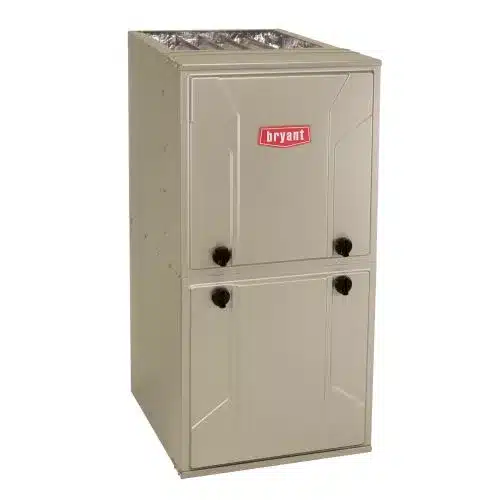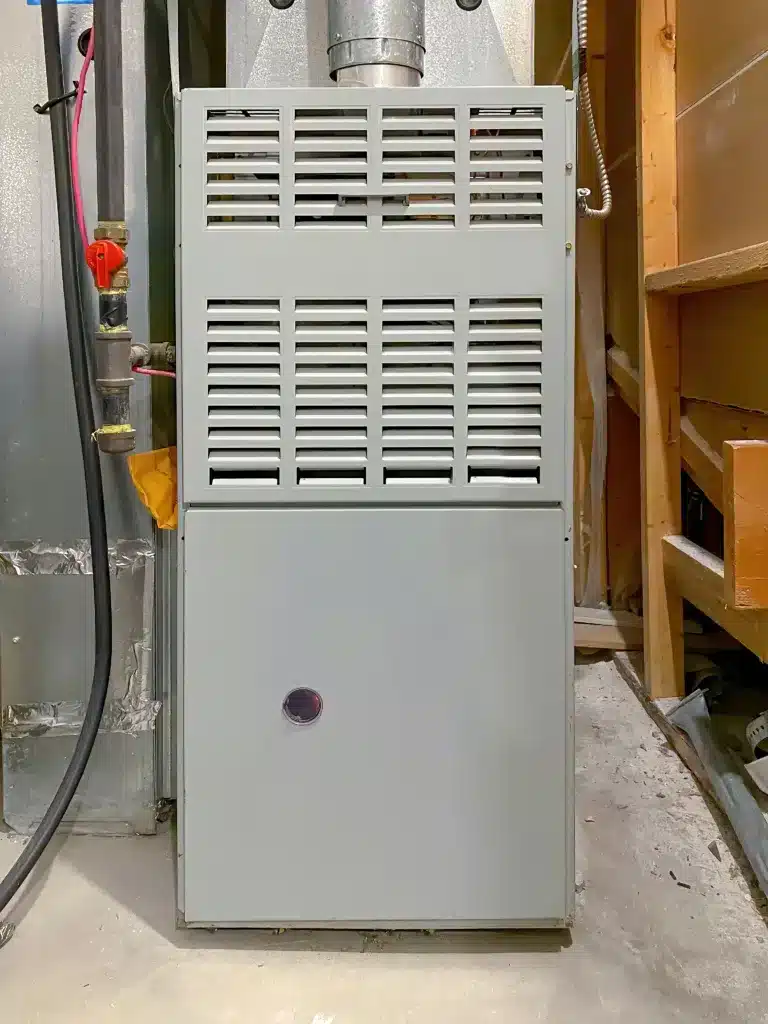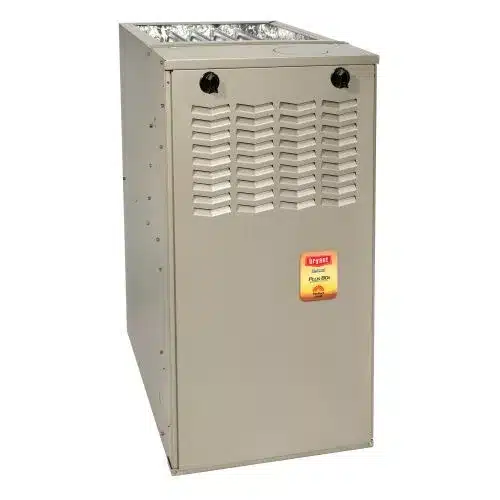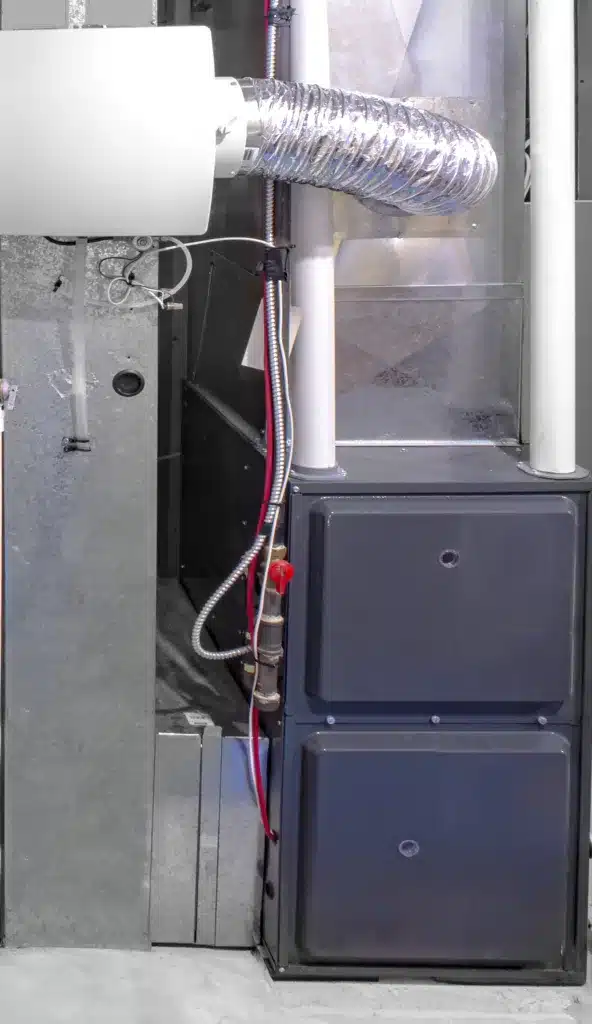Introduction
Natural gas furnaces are one of the most popular heating systems in the United States. Energy.gov reports that “the most common home heating fuel is natural gas, and it is used in about 57% of American homes.” While natural gas is not only used as heating fuel for furnaces, it does contribute a significant part to that statistic. Natural gas furnaces can be a great choice for a heating system, depending on a person’s needs. They do, however, have their cons and can be difficult to understand. In this blog post, we discuss what natural gas furnaces are and their pros and cons. If you have any comments after reading this blog post, leave them below! We will try our best to answer them.

What Are Natural Gas Furnaces?
A natural gas furnace is a type of furnace that uses natural gas as fuel. A gas furnace is an appliance that produces heat using either natural gas or propane as fuel. We go into more detail about propane gas furnaces in our “The Different Types of Furnaces” blog post.
There are five types of natural gas furnaces: single-stage, two-stage, two-stage variable speed, three-stage variable speed, and modulating variable speed. The different types are separated by their fan speeds and efficiency. Single-stage gas furnaces only operate on one fan speed. They are loud and inefficient. Two-stage gas furnaces operate on two fan speeds: high and low. Their two different speeds make them more efficient than single-stage gas furnaces and slightly quieter. They also do not need to be adjusted manually like single-stage furnaces have to be. They are not the most efficient type of gas furnace, however.
Lennox states that “‘variable speed’ refers to [a] furnace’s indoor blower motor, which moves at different speeds to precisely control the flow of heated and cooled air throughout your home.” This is true, and it is what separates two-stage variable speed, three-stage variable speed, and modulating variable speed furnaces from single-stage and two-stage speed furnaces. Two-stage variable speed furnaces are quieter than one-stage and two-stage gas furnaces, but they are still not the most efficient. Three-stage variable speed furnaces are even more efficient. They help to reduce energy costs by automatically adjusting the speed of a furnace based on the thermostat’s inputs. While two-stage variable speed gas furnaces can do this too, three-stage variable speed gas furnaces are even more precise.
Finally, the most efficient natural gas furnaces are modulating variable speed furnaces. Modulating variable gas speed furnaces are able to adjust their speed in small increments to use as little energy as possible when heating a home or building. This not only helps save money but makes sure that the temperature inside of a room is always precise. While the temperature of a room can be affected by outside sources that a furnace may not pick up on, such as a window shining on a thermostat or a bright lamp that was placed next to it, to the furnace, the temperature of the room is as accurate as it can be. Modulating variable gas speed furnaces are more expensive to install than other types of furnaces, but they help owners save money on energy bills at the end of the day.

What Are the Pros?
While there are many pros to owning natural gas furnaces, two of the main ones are their ability to heat homes and buildings faster than their alternatives, and the low cost of their fuel. These pros can make owning natural gas furnaces a great choice for owners, especially if they live in a colder climate.
- Heats Faster
Natural gas furnaces are known for being able to produce heat faster than any other furnace type. Heating from other types of furnaces tends to be more gradual when you first turn on your thermostat compared to natural gas furnaces. Natural gas furnaces are able to produce heat faster because the heat created by them is hotter than the heat created by other furnaces.
- Less Expensive Fuel
On average, natural gas costs less than other fuels for heating systems. Lower fuel costs can help lower energy bills and make natural gas a cost-efficient choice in the long run. The American Gas Association estimates that “households that use natural gas for heating, cooking, and clothes save an average of $1,068 per year compared with homes using electricity for those appliances.” Using natural gas to fuel your furnace can lead to cheaper energy bills and save you money.

What Are the Cons?
Unfortunately, natural gas furnaces do have some cons. The main cons are that natural gas furnaces, on average, cost more to install and have shorter lifespans than other furnace types, such as electric furnaces.
- Higher Installation Costs
In previous blog posts, we have talked about the price of natural gas furnace installations and how they compare to the installation of other furnaces. For example, gas furnaces tend to cost more to install than electric furnaces. As mentioned in our “The Different Types of Furnaces” blog post, the price of natural gas furnace installations varies depending on the furnace brand, HVAC company, efficiency of the furnace, and the venting system. It can also depend on the type of furnace, as we discussed in the “What Are Natural Gas Furnaces” section.
As a general rule of thumb, expect to spend between $2,000 – $10,000 for the unit and installation. This is a large range, however, and can be overwhelming when trying to figure out how much money it really costs to install a gas furnace. Thankfully, Forbes gives an average cost to install and purchase a gas furnace in 2023: $5,500. While this is still expensive, hopefully, it gives you a better idea of how high the installation costs for natural gas furnaces are.
- Shorter Lifespans
Natural gas furnaces do not last as long as some of their alternatives. An electric furnace may last twenty to thirty years with proper maintenance, while gas furnaces last fifteen to twenty years. A gas furnace’s lifespan may end up being shorter than average because it requires more maintenance than electric furnaces. Without proper maintenance, a gas furnace’s lifespan goes significantly down. One of the reasons why gas furnaces require more maintenance than electric furnaces is because they have more moving parts. The more moving parts a furnace has, the more maintenance it will require, and the more likely something will go wrong. This contributes heavily to natural gas furnaces’ lower lifespans.

Conclusion
We hope this blog post helped you understand how a natural gas furnace works and its pros and cons. A natural gas furnace can be a great choice for potential buyers as long as they understand them. It can help them save money in the long run. Do you live in Jefferson County or the surrounding areas and need help choosing the right furnace for you? Give us a call! Our number is 636-475-9384. We look forward to hearing from you.